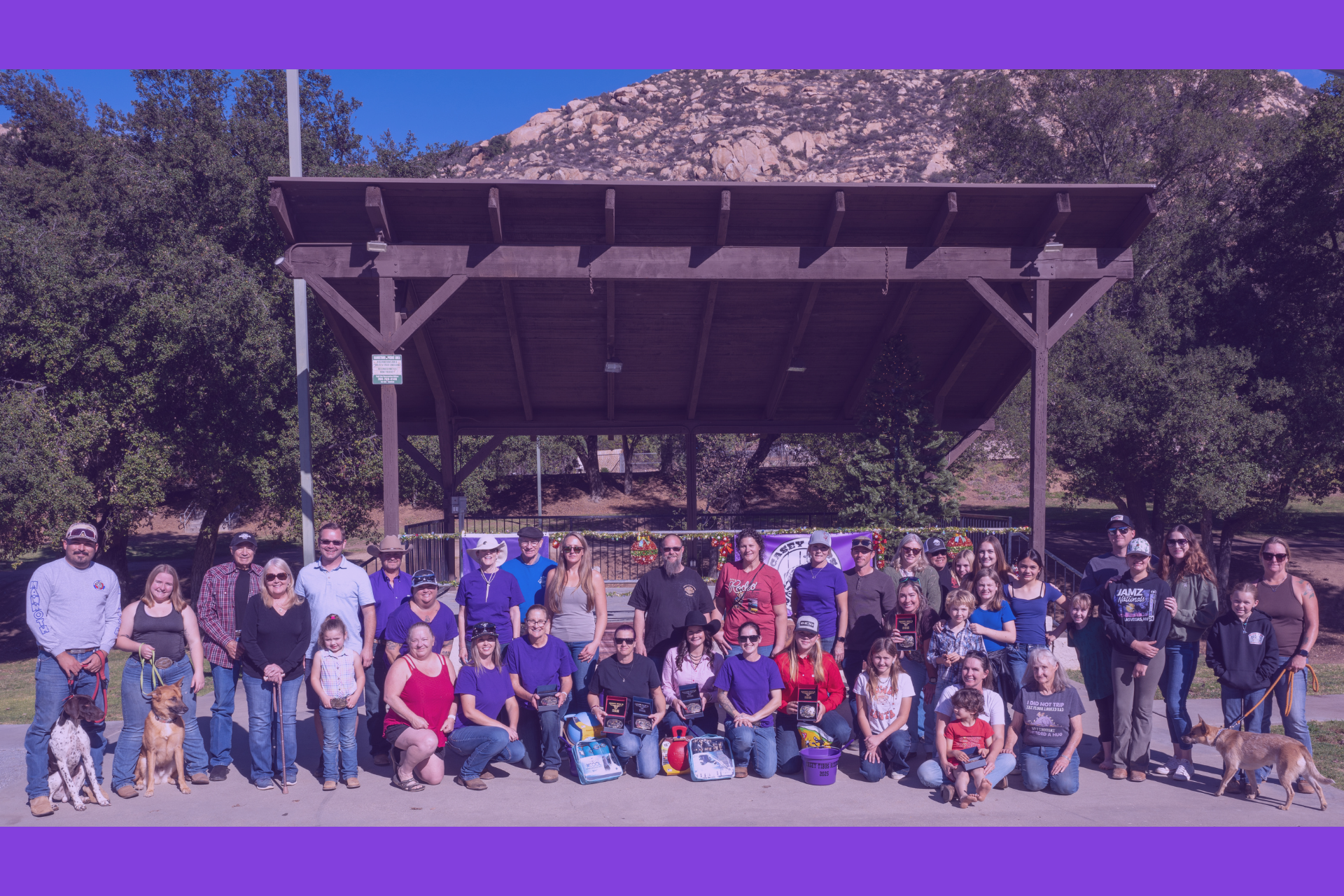Firewise Meeting Recap: Prepare Now, Wildfire Is Our Biggest Risk
Wildfire remains the single biggest danger to our community. Local experts urge residents to sign up for GENASYS Protect, plan evacuation routes, and take action now to harden their homes.
SDCEA General Manager Carl Wiese opened the Sept. 20 Firewise meeting with a direct message that set the tone for the five-hour discussion: “The biggest risk in SDCEA is fire.” County and local officials, first responders, recovery agencies, and insurance experts then explained what residents need to know — from alerts and evacuation rules to home hardening and recovery — and shared real-life lessons from neighbors who’ve been through it.
How you’ll be warned: the county recommends downloading apps
San Diego County uses multiple alert methods. Some push notifications are sent automatically to phones, while others require sign-up. Key systems recommended by officials:
- Wireless Emergency Alerts (WEA) - short emergency messages sent to mobile phones by authorized government alerting authorities. (Federal Communications Commission)
- Alert San Diego - county text/email/phone alerts (registration required). (alertsandiego.org)
- GENASYS Protect - the verified, zone-based notification app used by the Sheriff and Cal Fire for local, actionable messages and re-entry information. Officials strongly recommend downloading it and turning on location or zone alerts. (protect.genasys.com)
Officials cautioned that crowd-sourced apps (e.g., Watch Duty) may be fast but aren’t always reliable. For official instructions, rely on GENASYS Protect and Alert San Diego.
Evacuation basics: plan, pack, leave early
Lieutenant Roller of the Ramona Sheriff’s station emphasized the importance of preparation: know two exit routes from your neighborhood, choose a pre-planned meeting place (with family or friends), and assemble a go-bag with essential items, including medications, IDs, important documents, phone chargers, and water. He urged residents to leave before an evacuation order if conditions look dangerous — when thousands attempt to evacuate at once, traffic and emergency access become critical issues.
Key operational points from the Sheriff’s office: during large incidents, both lanes of SR-67 may be converted to exit lanes under law-enforcement control; GENASYS will provide repopulation and re-entry notices after an event; and evacuation types range from door-to-door evacuation orders to rare shelter-in-place directives when exits are unsafe.
Practical reminders: Drones are prohibited near firefighting operations (they endanger aircraft). Road closures may be “hard” (no re-entry) or “soft” (residents with ID may re-enter). Agricultural (AG) passes are rare and issued to very few. Local evacuation points and shelters can be activated, and past planning documents list sites such as San Vicente Golf Course as possible community shelters. (County of San Diego)
What recovery looks like: FEMA, Red Cross, and documentation
Cody Gallagher (FEMA) explained that federal assistance depends on declarations and documentation, including surveys, home inspections, and proof of loss, which help unlock programs. The timeline and aid level can vary, and residents are advised to respond to recovery surveys and upload photos and receipts to speed assistance. FEMA’s Individual Assistance guidance explains the next steps after applying. (FEMA)
Andrea Alfonsi Fuller (American Red Cross, Southern California Region) outlined shelter services — food, medical care, phone charging stations, mental-health support, and pet accommodations — and stressed that Red Cross services are free. Survivors are typically assigned a caseworker to help guide them through recovery resources. (American Red Cross)
Home hardening and defensible space: concrete steps from Cal Fire
Cal Fire’s Capt. Robert Johnson reviewed defensible-space guidance that every homeowner should follow: Zone 0 (0–5 ft) - make the immediate area ember-resistant; Zone 1 (5–30/50 ft) - keep it lean, clean, and green; Zone 2 (30–100 ft) - focus on fuel reduction and spacing to slow a fire’s advance. Start work now; clearing, trimming, and irrigation all help reduce risk. (CAL FIRE)
Nancy Berger’s story: insurance lost and then regained
A compelling local voice at the meeting was SDCEA resident Nancy Berger, who described a painful journey that many fear. After 50 years with her insurer, Nancy’s homeowners policy was canceled. “I was distraught,” she recounted (at the meeting). Determined to find a path forward, Nancy reached out to the California Department of Insurance, worked directly with her insurer, and engaged local Ramona resources to harden her property.
She completed the recommended home-hardening tasks, including removing heavy brush, relocating vulnerable plantings, and creating a defensible space, and documented every change for insurers and regulators. The result: her policy was reinstated, and her premium was reduced by roughly $1,000 per year. Nancy’s experience demonstrates that proactive mitigation and persistence with insurers and regulators can help restore coverage and reduce long-term risk and costs. For wildfire policy guidance and consumer help, the California Department of Insurance maintains a wildfire resources page. (California Department of Insurance)
Insurance realities: check your coverage now
Insurance mitigation specialist Valerie Eddy reminded the audience to carefully read policy details: most standard homeowners policies exclude coverage for flood and earthquake damage, and policy limits may not cover full replacement costs after a major loss. If you encounter denials or cancellations, the Department of Insurance offers resources and a consumer hotline to assist. (California Department of Insurance)
Bottom line for SDCEA residents
San Diego County is a leader in alerting and emergency coordination, but personal preparation makes the difference. Action steps from the meeting:
- Download GENASYS Protect and sign up for Alert San Diego. (protect.genasys.com)
- Know two exit routes and a safe meeting place.
- Assemble a go-bag with meds, IDs, chargers, and copies of insurance documents.
- Harden your home starting with Zone 0 through Zone 2. (CAL FIRE)
- Document mitigation work and retain photos/receipts for insurers and FEMA, as needed. (FEMA)
As Lt. Roller said at the meeting, “It’s not IF a fire will happen, it’s WHEN.” Nancy Berger’s recovery shows that hard work, documentation, and persistence can restore protection and peace of mind. Additionally, neighbors can learn from firsthand local experiences.
Quick links & apps (click to open)
- Alert San Diego — register for county alerts. (alertsandiego.org)
- GENASYS Protect — download the verified local-alert app. (protect.genasys.com)
- Wireless Emergency Alerts (WEA) — how phone alerts work. (Federal Communications Commission)
- Cal Fire — defensible space & home-hardening guidance. (CAL FIRE)
- FEMA — disaster assistance & Individual Assistance guidance. (FEMA)
- American Red Cross — Southern California region. (American Red Cross)
- California Department of Insurance — wildfire resources & consumer help. (California Department of Insurance)
A special thank you to Richard Drewery and the Firewise Committee for their dedication and hard work in organizing this important meeting. As volunteers, they invested their time to coordinate presenters, bring neighbors together, and ensure our community has the tools and knowledge to be better prepared.







